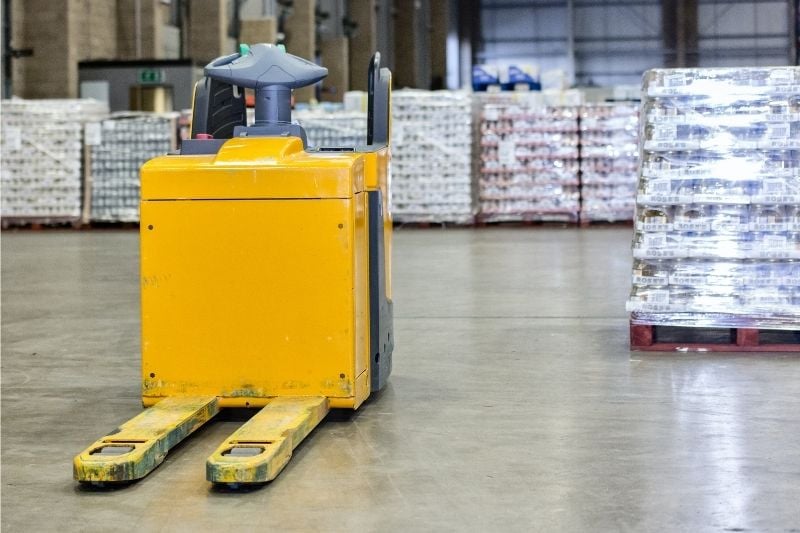Global lockdowns have accelerated the adoption of new technologies. But which disruptive technology trends will deliver the most value? Find out here.
Disruptive technology is any type of innovation that establishes a new market due to its superior traits when compared to a previous, comparable product. An early example of disruptive innovation would be the 1908 release of the Ford Model T, which, as the first affordable automobile in the United States, broke the previously widely accepted norm of horse carriages, signalling the beginning of the American age of modernisation. As technological advancements become more advanced and continue to push the already boundless capabilities of technology, those who come up with ideas for new disruptive innovations stand to become very successful. Here are 6 disruptive technologies to keep an eye on.
Deepfakes
Chilling video manipulation capabilities
Photo manipulation has existed since the 19th century, but deepfaked videos are a relatively new concept with scary capabilities that still haven’t been fully unlocked. Video manipulation has the potential to be devastating if applied in a political sense; imagine a doctored video of President Trump announcing that he has launched nuclear weapons against China or Russia. A May 2019 video of House Speaker Nancy Pelosi was deepfaked to make it seem like she was drunkenly slurring her speech, and the subsequent doctored video was shared by various politicians, including former New York City Mayor Rudy Giuliani and President Trump. The scariest part about deepfakes is that the majority of them are created by AI; specifically, generative adversarial networks (GANs), in which one machine learning (ML) model trains on a data set of photos and videos and then creates video forgeries, while the other model attempts to detect the forgeries. The forger continues creating fakes until the other model can’t detect the forgery anymore. Larger data sets make it even easier for the forger to create a believable deepfake, which is why the profusion of easily obtainable footage available online of former presidents and Hollywood celebrities make them easy targets.
Mixed Reality
A combination of Virtual Reality and Augmented Reality
By now, most people have had some experience with Virtual Reality (VR) or Augmented Reality (AR), through demos at tech shops, Pokemon Go, or dancing emojis on Snapchat. Mixed Reality (MR), however, strikes a balance between the immersive quality of VR and the transformative features of AR by presenting both real world and virtual elements to the user. Many industries have already found incredibly useful ways to integrate MR into their workspaces. Case Western Reserve University, for example, has developed an MR app called HoloAnatomy, which allows for medical professors to talk about virtual bodies “standing” in front of them to students, easing a little of the difficulty of teaching classes amidst social distancing restrictions. Similarly, Ford is now using Microsoft’s HoloLens to experiment with new features on virtual prototypes of their cars, which is far more efficient than building multiple physical models from scratch just to make a few small changes. With its ability to transform how humans interact with the world around them, MR as a disruptive technology is a real game-changer, and has the potential to change the way businesses operate forever.

Tone Analysis Technologies
Automated psychologists
Tone analysis technologies are exactly that – software that listens to a person talking, and analyses their words to tell you how they’re feeling. The IBM Watson Tone Analyzer uses linguistic analysis to detect anger, fear, joy, sadness, analytical, confident, and tentative tones in text. This technology has massive potential in areas such as social media or customer support helplines, as it could, in the near future, help you figure out what people are generally feeling about your product, or provide feedback on how a customer support employee should respond to a customer based on their tone and choice of words. Today, tone analysis technologies are often used in the development of chatbots on websites, as an automated agent can respond to an angry customer with messages like “I’m sorry you are upset about this problem,” or a happy customer with messages akin to “I’m glad that I was able to help.” And again, since the technology relies on analysing data sets to improve its responses, it will only become more accurate over time.
The Internet of Robotic Things (IoRT)
Revolutionising manufacturing
The Internet of Things is used to describe the network that connects “smart” physical devices, such as Google Homes or FitBits. However, the Internet of Robotic Things (IoRT) is what’s currently revolutionising the way manufacturers operate their businesses. A major disruptive technology trend, the use of robots in manufacturing has vastly improved the efficiency of supply chain operations by helping manufacturers tackle warehouse worker shortages and rising e-commerce demands, and all while streamlining industry processes in a more cost-effective manner. There has been a rising trend of automation in manufacturing in the past few years, and by the end of 2022, almost 2 million new units of industrial robots are expected to be installed in factories around the world. By then, it is estimated that four million industrial robots will be in use around the world – more than two times what it was in 2017. From speeding up operations to removing any potential for human error, manufacturers are fast recognising the integration of robotic technologies as being key to increased supply chain productivity.

Drone Deliveries
Changing the way you shop online
Volansi, an American drone logistics startup, recently announced that they raised an additional USD 50 million, bringing their total funding up to an impressive USD 75 million since their founding back in 2015. The company’s primary drones are the Voly C10, which can move objects weighing up to 10 pounds up to 50 miles, and the M20, which claims to have a 350-mile range – an extremely impressive feat considering most manned drones can only travel up to 2 miles away from its pilot. Back in 2016, Amazon announced plans to begin a new service called Prime Air, which they said would be able to deliver goods from participating Amazon warehouses to people within 30 minutes, so long as they were less than 10 miles away from the warehouse. Just two weeks ago, the company was granted approval by the Federal Aviation Administration to operate as a drone airline. As drones are capable of traversing terrain that might be difficult or impossible to travel through, another potential key application could also be the safe delivery of medical supplies to warzones or affected areas that need them quickly.
Cultured Meat
Striking a balance between plant-based and real meat
In recent years, plant-based meat substitutes have experienced a meteoric rise in popularity, with companies like Impossible Foods and Beyond Meat seeing their products regularly appearing on restaurant menus. In contrast, cultured (lab-grown) meat products are not on the market yet, and many people are still unaware of how they are really made. The process begins when a cell is taken from an animal and grown up in a lab to establish what is called a cell line. Once a good cell line has been discovered (e.g. one that grows fast and is tasty), a sample is introduced into a bioreactor, where the cells grow exponentially and are then harvested, and the resulting meat mush is then sculpted into various shapes like patties and sausages. As cultured meat companies like Eat JUST battle for the right to be labelled as just “meat”, Dutch restaurant Bistro in Vitro has become the first restaurant that purely specialises in lab-grown meat, advertising such products as cubes of meat made from stem cells collected from celebrities, and “meat paint”, where the customer is given a paintbrush and a palette of meat mush to draw with and eventually eat.

Wrapping Up
Disruptive technologies can be implemented in almost every industry, meaning there is always room for innovation. These trends are definitely some of the most interesting ones that might establish themselves as industry regulars very soon, but keep an eye out for other disruptive technology trends that are redefining the boundaries of what their industry was previously known for.
Related Articles
The 12 Biggest Global Technology Trends in 2020
7 Hottest Investment Trends You Should Consider, According to a VC
The Future of Retail: 2020 Industry Trends from E-Commerce Expert





